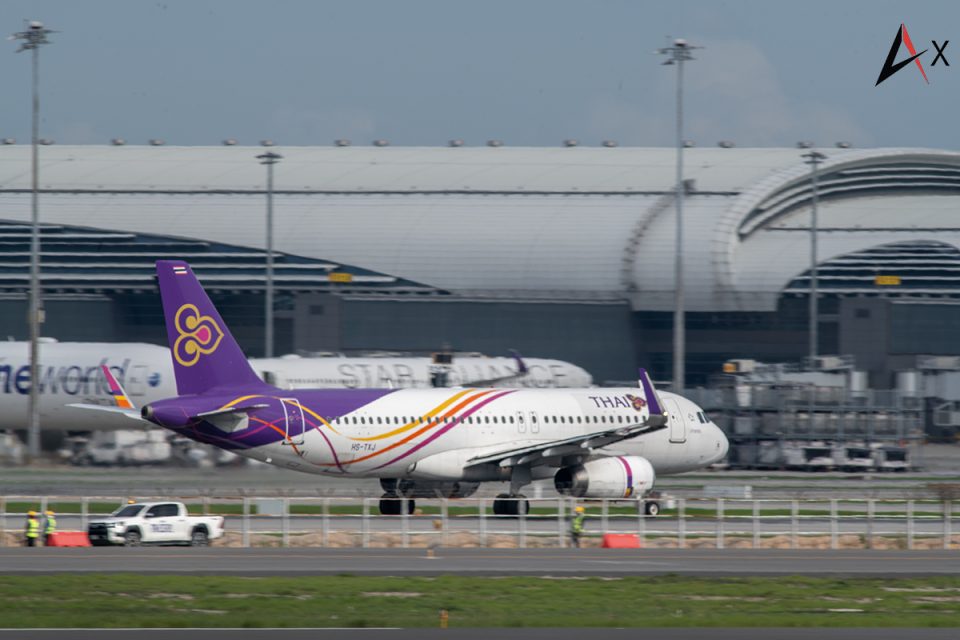Thai Airways International (THAI) is unveiling its “Fly for the New Pride” brand campaign following a successful, years-long business rehabilitation. With a significantly reduced debt and new revenue strategies in place, the airline is eyeing a return to trading on the Stock Exchange of Thailand (SET).
Celebrating its 65th anniversary, THAI has reduced its liabilities from approximately 400 billion baht in 2020, when creditors filed for business rehabilitation through the Central Bankruptcy Court, to around 80 billion baht, according to CEO Chai Eamsiri. The remaining debt is scheduled for gradual repayment through 2036, with manageable annual payments. For 2025, THAI has allocated about 10 billion baht to service its debt, secured through liquidity reserves, said Chai, who assumed office on February 1, 2023.
As part of its recovery efforts, THAI has divested assets valued at 10 billion baht—including land, buildings, and aircraft—and reduced its staff from nearly 30,000 to 14,000, representing 23% of total costs. To stay competitive, the airline plans to maintain staff expenses at around 13% of total costs, with no plans for further staff increases.
In 2024, THAI reported total revenues of 188 billion baht, a 16.7% increase year-on-year. Despite a net loss of 26.9 billion baht, this was largely due to a one-time accounting loss of 45.3 billion baht from debt-to-equity conversions, completed in November 2024. The majority of these losses stemmed from creditors exercising conversion rights at prices below the aircraft’s fair value, and early debt repayments by creditors.
“The airline has earned operating profits over the past two years, with revenues already returning to pre-COVID levels, despite a capacity reduction of nearly 20%,” Chai noted. To offset previous losses, THAI reduced its share par value from 10 baht to 1.3 baht, a move aligned with its rehabilitation plan.
Additionally, THAI raised 76 billion baht through a capital increase involving debt-to-equity swaps and a rights offering, transforming shareholder equity into a surplus. This financial boost is paving the way for the airline to seek court approval to exit rehabilitation in the second quarter, with plans to relist on the SET by July.
FLEET EXPANSION AND MARKET REBUILD
Chai highlighted orders for 45 Boeing 787-9 Dreamliners, with options for an additional 35 aircraft, contingent on market conditions. The current fleet size has shrunk to 79 aircraft from 103 pre-pandemic, with deliveries expected to begin in mid-2027 and continue over the next decade. The goal is to expand the fleet to 103 aircraft by 2026, 116 by 2027, and ultimately 150 by 2033, supporting increased capacity and global outreach.
“Acquiring new aircraft is essential for growth, especially as demand for air travel continues to surge,” said Chai. Although Asia-Pacific recovery lags, with sluggish Chinese markets, demand across other regions is projected to rebound next year.
Later in 2025, THAI will receive three leased Airbus A321 Neos—one wide-body and two narrow-bodies—and plans to acquire more aircraft in 2026, including four wide-body jets and 15 narrow-bodies, restoring its pre-pandemic capacity.
NEW Revenue Opportunities
THAI has partnered with Airports of Thailand to promote Bangkok as a transit hub, offering stopover packages that include itineraries, accommodations, and activities. This initiative aims to attract longer layover passengers, boosting tourism and airline revenue.
The airline also signed a memorandum of understanding with Bangkok Airways to develop a 10-billion-baht aircraft maintenance center at U-tapao airport, seeking to establish Thailand as a regional aviation maintenance hub amid rising regional demand. Additionally, THAI plans to develop a cargo facility at Suvarnabhumi Airport, which is nearing capacity, and expand its food retail business to diversify revenue streams. The airline is considering joint ventures to support these expansions, depending on the business models.
Operationally, THAI’s winter 2025 flight schedule includes services to 64 destinations with 883 weekly flights—an increase to meet growing passenger demand and travel trends. The airline expects to gain court approval for exiting rehabilitation by early summer, with plans to relist on the SET shortly thereafter, enhancing its corporate governance and access to future funding.
“Going public will provide us with more avenues for capital raising and ensure good management practices,” Chai remarked.





